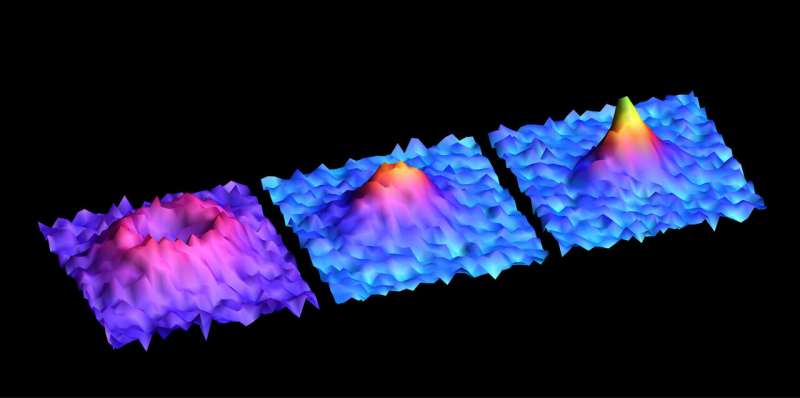May 17, 2019 report
Single molecule magnet used as a scanning magnetometer

A team of researchers from the University of California and Fudan University has developed a way to use a single molecule magnet as a scanning magnetometer. In their paper published in the journal Science, the group outlines their research which involved demonstrating their sensor scanning the spin and magnetic properties of a molecule embedded in another material.
As scientists continue their quest to squeeze ever more data onto increasingly smaller storage devices, they are exploring the possibility of using the magnetic state of a single molecule or even an atom—likely the smallest possible memory element type. In this new effort, the researchers have demonstrated that it is possible to use a single molecule affixed to a sensor to read the properties of a single molecule in another material.
To create their sensor and storage medium, the researchers first absorbed magnetic molecules of Ni(cyclopentadienyl)2 onto a plate coated with silver. Then, they pulled a nickelocene molecule from the silver surface and applied it to the tip of a scanning tunneling microscope sensor. Next, they heated an adsorbate-covered surface to 600 millikelvin and then moved the sensor tipped with the single molecule close to the surface and read the signals received by the probe as the two molecules interacted.
The researchers report that they were able to read the spin and magnetic interactions as they occurred with the two molecules. They report also that using the probe they were also able to create images of the shape of the interactions in several spatial directions. They noted that the signals they received were strongest when the probe was placed directly over the center of the molecule under study and that it decreased asymmetrically as the angle was increased and exponentially as the tip was moved farther away. The team also linked two of the nickelocene molecules together and report that they behaved according to density functional theory.
The researchers conclude by suggesting that it is possible to measure and monitor spin interactions at the angstrom level, which is likely to lead to the development of new kinds of magnetic sensors.
More information: Gregory Czap et al. Probing and imaging spin interactions with a magnetic single-molecule sensor, Science (2019). DOI: 10.1126/science.aaw7505
Journal information: Science
© 2019 Science X Network





















